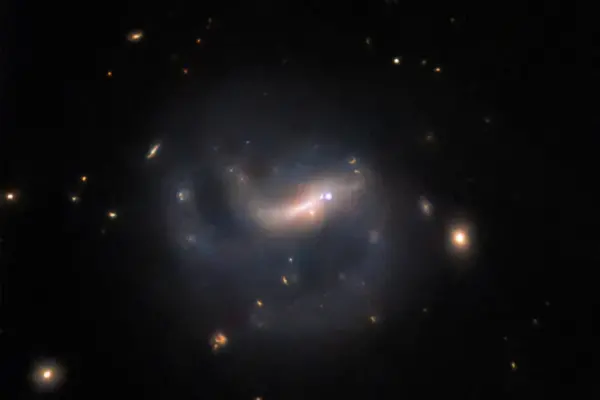Recently, the National Aeronautics and Space Administration (NASA) released a new image captured by the Hubble Space Telescope, showcasing the barred spiral galaxy LEDA 857074 alongside a supernova.
LEDA 857074 is a barred spiral galaxy located in the Eridanus constellation, with its spiral arms broken in parts. In the image, there is a supernova named SN 2022ADQZ, emitting bright light on the right side of the short bar structure of LEDA 857074.
Barred spiral galaxies, as previously reported, are a type of spiral galaxy characterized by a short bar structure formed by a concentration of stars in the middle. The spiral arms of barred spiral galaxies typically extend outward from the end of the short bar.
According to NASA, several reasons can lead to a supernova explosion, one of which is the death of supermassive stars. When a supermassive star depletes its hydrogen fuel, it starts fusing the remaining elements into heavier ones.
The outward force generated by these final fusion (also known as fusion) reactions, known as radiation pressure, decreases as increasingly heavy elements are formed in the star’s core. When heavier elements form in the core of the star, the core itself begins to collapse under its own gravity, causing the star’s outer layers to be destroyed in a supernova explosion.
Depending on the original mass of the star, its core may collapse into only neutrons, becoming a neutron star, or its gravity may be so strong that it collapses into a black hole.
Astronomers detected the supernova SN 2022ADQZ through automatic sky surveys at the end of 2022. This discovery led them to observe LEDA 857074, the host galaxy of this supernova, using the Hubble Space Telescope in early 2023.
The sharp observational capabilities of the Hubble Space Telescope allow it to see supernovae billions of light-years away, which are challenging for other telescopes to study. Images of supernovae observed by ground-based telescopes often merge with images of their host galaxies, but the Hubble Space Telescope can distinguish the light of supernovae from that of their host galaxies, directly measuring supernovae.
Astronomers detect thousands of supernovae every year, but the chances of finding supernovae in the millions of classified specific galaxies are slim.
Thanks to the discovery of the supernova SN 2022ADQZ, astronomers were able to observe its host galaxy, LEDA 857074, through the Hubble Space Telescope and classify it among other celestial bodies.

